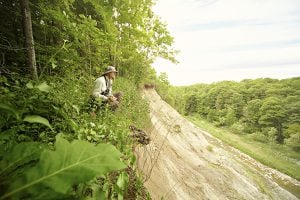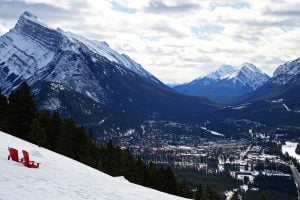Travel
Photos: The wild, wonderful landscapes of western Newfoundland
Photographer Jenny Wong reveals Newfoundland’s jaw-dropping scenery on an adventure with Great Canadian Trails
-
Published Mar 03, 2023
-
Updated Feb 09, 2024
-
461 words
-
2 minutes
-
with text by Madigan Cotterill
Ancient rock formations, dramatic coastlines and dense forests teeming with wildlife: no matter which way you look in Newfoundland, you are sure to be amazed.
One of the most geologically unique regions in Canada, Newfoundland comprises the easternmost land in North America, 29,000 kilometres of coastline, 18 ecological and wilderness reserves, and two of the country’s most photographed national parks, including Gros Morne National Park.
With its broad alpine vistas, friendly outports and steep-walled fiords, home to whales and seabirds, foxes and moose, the province’s western coast is a magnet for outdoor enthusiasts from across the globe. In the summer of 2022, photographer Jenny Wong spent eight days exploring the region on a Canadian Geographic Adventure with Great Canadian Trails.
Highlights of the trip include guided hikes in Gros Morne; a visit to L’Anse aux Meadows, a UNESCO World Heritage Site that preserves the remains of a Viking encampment — the first known evidence of European presence in North America; a scenic cruise through Western Brook Pond Fjord; views of the legendary Iceberg Alley from Quirpon Island, and abundant opportunities to sample the local cuisine, in which seafood — not unexpectedly — plays a starring role.
Wong, who has travelled extensively in Canada, says Gros Morne is one of the most interesting and beautiful parks she’s visited, adding it never felt crowded, despite being one of the country’s most popular parks thanks to its relative accessibility. Great Canadian Trails spotlights the Green Gardens Trail, an 11-kilometre out-and-back hike offering views of the park’s famous Tablelands and lush alpine pastures — the eponymous “green gardens” — before ending at a beach where waterfalls and basalt stacks dot the coastline. Here, guests enjoy lunch, beautifully packed without plastic wrap in a reusable bento box. A second day of exploring in Gros Morne focuses on the Tablelands, an otherworldly landscape of exposed mantle rock normally found deep beneath the Earth’s crust.
Another highlight of the trip is day six, when travellers wake up early for a full day of exploring Quirpon Island on foot and by zodiac. Walking the cliff-top trails and cozy coves of this remote island situated at the northernmost tip of Newfoundland’s Northern Peninsula, Wong spotted kittiwake colonies and nesting eider ducks. While on the zodiac, there is also the chance to spot humpback, minke and orca whales. The experience is enhanced with two nights’ accommodation at the cozy Lighthouse Inn, a 10-room light-keeper’s home situated at the base of a still-operating lighthouse.
The 2024 Wonders of Western Newfoundland adventure, with RCGS Ambassador David Gray, departs July 2.



















